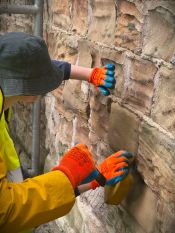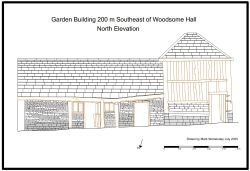Natural Pozzolana described by Vitruvius in the Roman Era
Vitruvius writing The Ten Books of Architecture in 27BCE reminds us that natural and manmade pozzolana has been used to improve fat lime mortars for a long time.
He states that: ‘using river sand or sea sand with the addition of a third of a part composed of burnt brick, pounded up and sifted, will make your (slaked lime based) mortar of a better composition to use’ ; and ‘that a powder (fired clay sub soils).. found in the neighbourhood of Baiae and in the country belonging to towns around Mount Vesuvius… when mixed with lime and rubble not only lends strength to buildings but will set under water’
It is important to remember that a wide variety of lime mortars have been used in the past and we should embrace the use of all mortars but pick carefully the most appropriate strength lime mortar for the work being undertaken.
Weak and friable stonework might benefit from a weak hot lime mix whereas a moderately hydraulic lime mortar either made from a hydraulic lime or by mixing brick dust or a natural pozzolana as Vitruvius describes would be suitable for denser brickwork.
Womersleys will always advise you on the most appropriate strength lime mortar to use in any conservation or renovation work that you are involved with.
Joseph Wright of Derby, ‘Vesuvius in Eruption, with a View over the Islands in the Bay of Naples’ c.1776–80
Vesuvius in Eruption, with a View over the Islands in the Bay of Naples c.1776–80
by Joseph Wright of Derby (3 September 1734 – 29 August 1797)
Related Articles

The steps members of the Waterton’s Wall restoration team, with support from Mark Womersley, have been following to consolidate, conserve and repair this historic wall that represents the successful efforts of Charles Waterton to preserve the wildlife that lived on his estate near Wakefield in West Yorkshire.
1. Fill deep voids behind the wall’s facing stones with deep pointing work. The works involve …

Mark spent a day recording a historic timber-framed garden building at Woodsome Hall
Mark Womersley, as part of his voluntary work with the Yorkshire Vernacular Buildings Study Group, spent…

M Womersleys were delighted to offer a day of tutoring to those who attended the Wentworth Woodhouse Working Party
M Womersleys were delighted to offer a day of tutoring to those who attended the Wentworth Woodhouse…